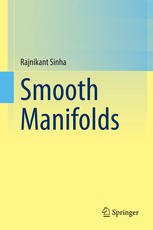

Most ebook files are in PDF format, so you can easily read them using various software such as Foxit Reader or directly on the Google Chrome browser.
Some ebook files are released by publishers in other formats such as .awz, .mobi, .epub, .fb2, etc. You may need to install specific software to read these formats on mobile/PC, such as Calibre.
Please read the tutorial at this link: https://ebookbell.com/faq
We offer FREE conversion to the popular formats you request; however, this may take some time. Therefore, right after payment, please email us, and we will try to provide the service as quickly as possible.
For some exceptional file formats or broken links (if any), please refrain from opening any disputes. Instead, email us first, and we will try to assist within a maximum of 6 hours.
EbookBell Team

4.4
92 reviewsThis book offers an introduction to the theory of smooth manifolds, helping students to familiarize themselves with the tools they will need for mathematical research on smooth manifolds and differential geometry. The book primarily focuses on topics concerning differential manifolds, tangent spaces, multivariable differential calculus, topological properties of smooth manifolds, embedded submanifolds, Sard’s theorem and Whitney embedding theorem. It is clearly structured, amply illustrated and includes solved examples for all concepts discussed. Several difficult theorems have been broken into many lemmas and notes (equivalent to sub-lemmas) to enhance the readability of the book. Further, once a concept has been introduced, it reoccurs throughout the book to ensure comprehension. Rank theorem, a vital aspect of smooth manifolds theory, occurs in many manifestations, including rank theorem for Euclidean space and global rank theorem. Though primarily intended for graduate students of mathematics, the book will also prove useful for researchers. The prerequisites for this text have intentionally been kept to a minimum so that undergraduate students can also benefit from it. It is a cherished conviction that “mathematical proofs are the core of all mathematical joy,” a standpoint this book vividly reflects.